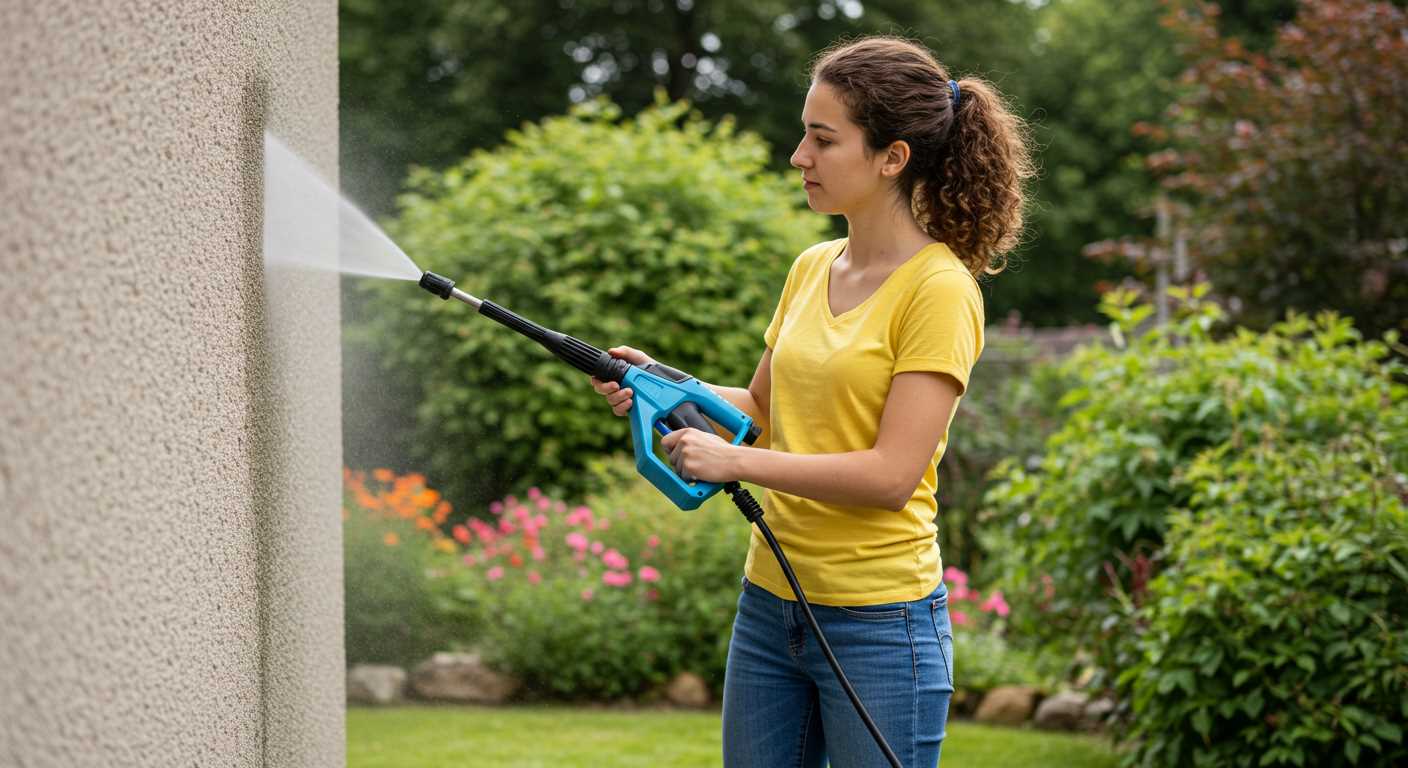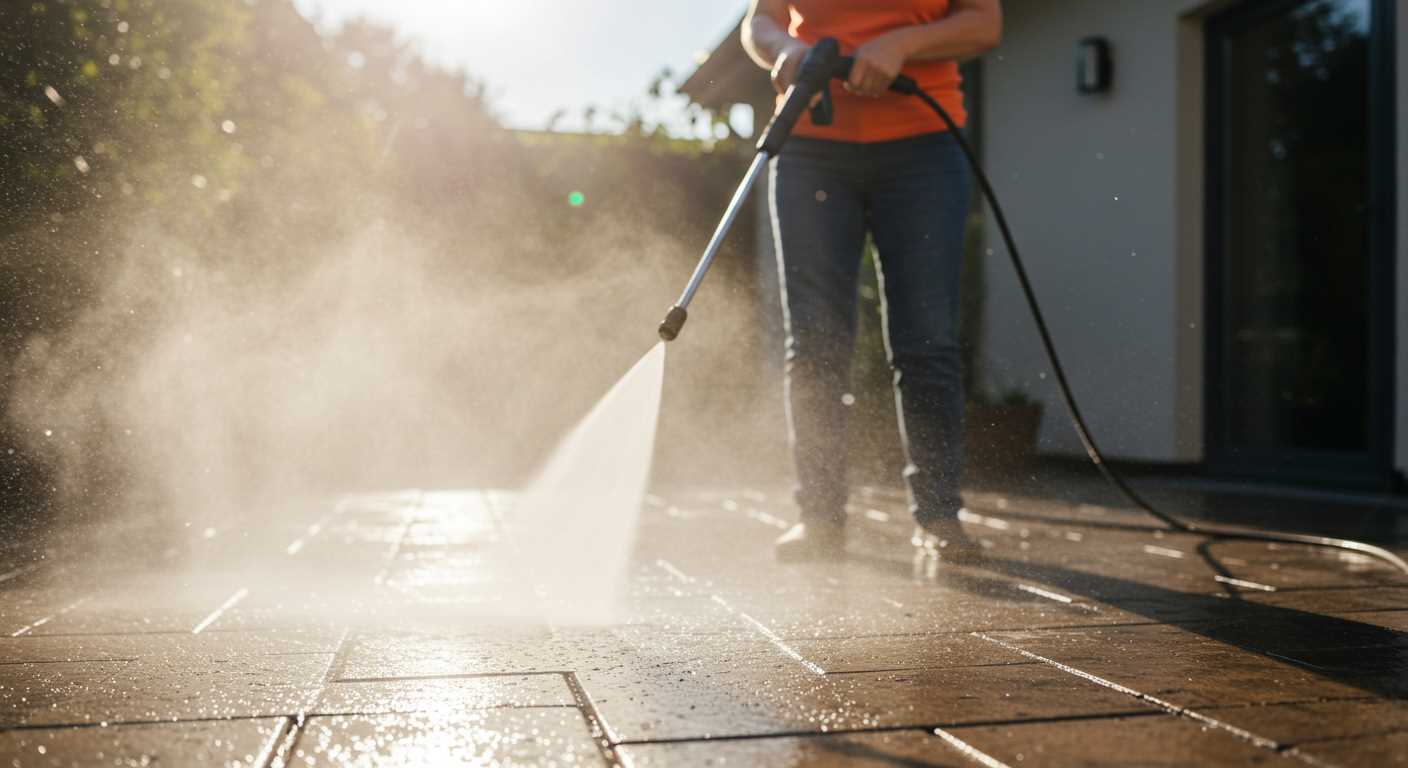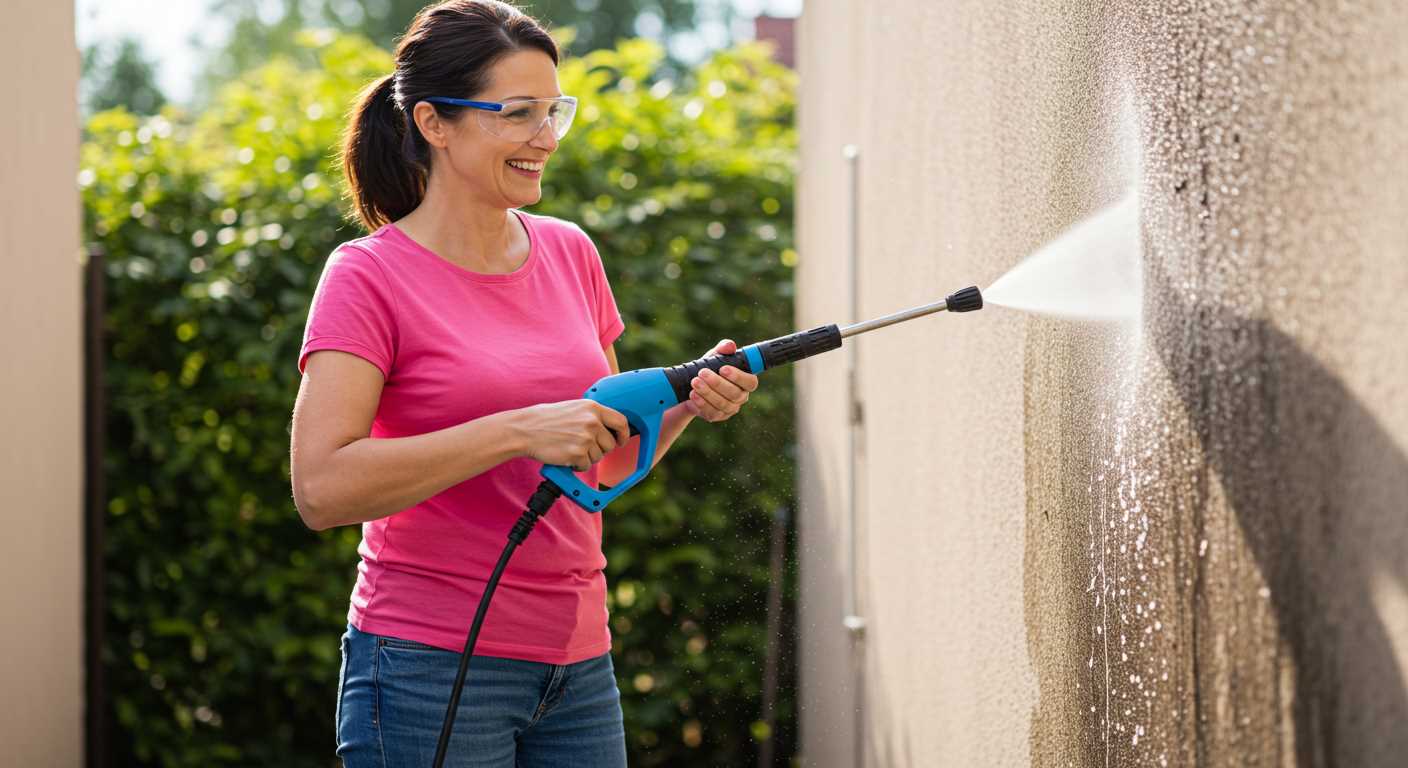


Start by mixing a solution of warm water and mild detergent in a bucket. Use a soft bristle brush to gently scrub the affected areas. This approach helps to lift the superficial discolouration without damaging the surface. After scrubbing, rinse thoroughly with clean water to remove any soap residue.
If the stains persist, create a paste using baking soda and water. Apply it to the stained sections, allowing it to sit for about 15 minutes before scrubbing again. This natural abrasive can help break down stubborn residues effectively. After treating, rinse the area well to ensure no remnants of the paste remain.
For deeper, more stubborn discolouration, consider using oxalic acid, often found in wood bleach products. Mix according to the manufacturer’s instructions, apply it to the discoloured areas, and let it sit for the recommended time. This method can help restore the timber’s original tone. Remember to wear gloves and protective eyewear when handling such chemicals.
Finally, once the surface is clean and dry, applying a protective finish or sealant will prevent future staining. Regular maintenance and cleaning will also extend the life of your timber surfaces, keeping them looking their best.
Eliminating Residue from High-Pressure Cleaning on Timber
To effectively address the unsightly impressions left on timber surfaces after high-pressure cleaning, I recommend starting with a gentle sanding process. Use fine-grit sandpaper (around 220 grit) to smooth out the affected areas. This technique helps in blending the uneven texture caused by the intense water pressure.
Steps to Follow
- Ensure the timber is dry before beginning the sanding process.
- Lightly sand the affected areas in the direction of the grain to avoid creating additional scratches.
- After sanding, wipe the surface with a damp cloth to remove any dust particles.
In cases where surface damage is more pronounced, consider applying a wood brightener or a specific wood cleaner designed to restore the natural hue. Follow the manufacturer’s instructions for appropriate application methods and dwell times.
Finishing Touches
- Once the cleaner has worked its magic, rinse the surface thoroughly.
- Allow the timber to dry completely before applying any protective finish, such as a sealant or stain.
- Regular maintenance with gentle cleaning solutions can help prevent future issues.
In my experience, taking these steps not only restores the aesthetic appeal of the timber but also prolongs its lifespan. Keeping on top of maintenance can make a significant difference in the long run.
Assessing the Damage: Understanding Pressure Washer Marks
Inspecting the surface is the first step after noticing undesirable streaks on your timber. These streaks typically indicate damage caused by water jets, which can penetrate deeper than expected, leading to discolouration or surface abrasions. Here’s how to evaluate the extent of the harm:
Visual Inspection
- Examine the pattern of the streaks – Are they uniform or varied? Uniform marks might suggest a consistent technique, while varied patterns could indicate inconsistent pressure or nozzle distance.
- Check for colour changes – Lighter areas often signify that the finish has been stripped away, exposing raw fibres. Dark spots may reflect trapped moisture or dirt.
- Feel the texture – Run your hand over the surface. If it feels rough or splintered, deeper damage may have occurred, requiring more intensive restoration efforts.
Moisture Assessment
- Conduct a moisture test by applying a few drops of water to the affected areas. If the water beads up, the finish may still be intact. If it soaks in quickly, the protective layer is compromised.
- Consider the wood type – Softer woods like pine can suffer more from high-velocity jets compared to denser types like oak. This affects not only appearance but also long-term durability.
After assessing the damage, it might be worth considering tools that can aid in the restoration process. For example, using the best car wash pressure washer nozzle foam cannon gun sprayer can help manage cleaning tasks without over-applying force, reducing the risk of further harm.
Understanding what you’re dealing with can save time and effort in repairs. Keep a keen eye on these details to address the issue effectively.
Choosing the Right Cleaning Solution for Wood
The most effective cleaning solution for restoring timber after aggressive cleaning methods is a blend of oxygen bleach and water. This combination not only lifts stains but also brightens the surface without causing damage. I recall a project where I was tasked with reviving a weathered deck. Using oxygen bleach diluted in water transformed the surface remarkably without any risk of discolouration.
For tougher stains, a specialised wood cleaner can be beneficial. Look for products containing sodium percarbonate, which is less harsh than chlorine bleach and safe for the environment. During my years in the field, I often recommended this type of cleaner for its ability to penetrate deeply without harming the wood’s integrity. I remember one homeowner who was amazed at how effectively it removed years of grime without any scrubbing.
Another option is a mild detergent solution. This can be effective for light cleaning tasks. I’ve found that mixing one part dish soap with ten parts water works well for routine maintenance. It’s gentle yet effective for keeping surfaces clean without harsh chemicals. One summer, I used this method on a patio, and the results were impressive, leaving the boards looking fresh and inviting.
Always remember to test any solution on a small, inconspicuous area before applying it widely. A client once applied a strong cleaner without testing, leading to uneven results. A simple patch test could have saved time and effort. In my experience, the right choice of cleaning solution combined with proper technique makes all the difference in achieving a beautiful finish on timber surfaces.
Techniques for Lightly Sanding Affected Areas
Begin by selecting the appropriate grit sandpaper. For minor imperfections, 120 to 150 grit works effectively. If the damage is more pronounced, start with 80 grit and finish with a finer grade. This approach helps in achieving a smooth finish without over-sanding the surrounding surface.
Employ a sanding block or an orbital sander for even pressure distribution. A sanding block allows for better control, especially in corners and edges. When using an orbital sander, keep it moving to avoid creating uneven spots.
Before starting, ensure the surface is clean and dry. Dust and debris can interfere with the sanding process, leading to unsatisfactory results. After sanding, wipe down the area with a damp cloth to remove any dust particles.
Use circular motions to sand the affected sections. This technique helps blend the repaired area with the rest of the surface, making imperfections less noticeable. Be patient; don’t rush through this process.
After sanding, inspect the area closely. If necessary, repeat the sanding process with a finer grit to achieve the desired smoothness. Always finish with the finest grit to ensure a polished look.
| Grit Size | Purpose |
|---|---|
| 80 | Initial sanding for deeper marks |
| 120 | General smoothing |
| 150 | Final finish for a polished look |
Once sanding is complete, consider applying a suitable finish, such as stain or sealant, to protect the surface and ensure a uniform appearance. This step is crucial for longevity and maintaining the aesthetics of the surface.
Applying Wood Stain: Matching the Original Finish
To effectively restore the appearance of your timber surfaces, begin by selecting a stain that closely resembles the original hue and finish. Test a small area first to ensure an accurate match. It’s essential to consider both the colour and the sheen level of the stain. If your deck or furniture had a glossy finish, opt for a semi-gloss or gloss stain; for a matte appearance, choose a flat or satin option.
Choosing the Right Stain
When selecting a wood stain, look for products specifically designed for exterior use, as these provide better UV protection and durability. Oil-based stains penetrate deeply, enhancing the natural grain, while water-based stains dry quicker and have lower odour levels. If unsure, I recommend trying a couple of different stains to find the perfect blend. Always consult the manufacturer’s guidelines for compatibility with existing finishes.
Application Techniques
Before applying the stain, ensure the surface is clean and dry. Use a brush, roller, or sprayer for even application. Work in sections and maintain a wet edge to avoid lap marks. For the best results, apply two coats, allowing the first to dry thoroughly before adding the second. Regularly step back to assess and ensure an even finish across the entire surface.
After restoration, consider using pressure washers for cleaning decking to maintain your wood’s appearance, but always use the correct settings to prevent future damage. Keeping the surface sealed will prolong its life and beauty.
Sealing the Wood After Restoration
After restoring the surface, applying a suitable sealant is critical for protecting the material from moisture and UV damage. Choose a high-quality polyurethane or penetrating oil finish, as these options provide excellent durability and enhance the natural beauty of the grain.
Preparation for Sealing
Ensure the surface is clean and completely dry. Inspect for any remaining imperfections; if needed, lightly sand these areas again to ensure a smooth finish. Wipe down with a damp cloth to remove dust, allowing it to dry fully before proceeding.
Application Techniques
Using a brush or a roller, apply the sealant evenly. Work in small sections to avoid streaks and ensure thorough coverage. For penetrating oils, use a cloth to wipe off excess after application, allowing the product to soak in. Follow the manufacturer’s instructions regarding drying times and the number of coats required for optimal results. Regular maintenance, including reapplication as needed, will keep the surface looking fresh and protected over time.
Preventing Future Pressure Washer Damage
Regular maintenance is paramount. After restoring your timber surfaces, consider applying a high-quality sealant designed for outdoor use. This creates a protective barrier that helps resist moisture and UV damage, significantly reducing the risk of discolouration and wear.
Adjust the nozzle and pressure settings on your equipment. I recall a time when I inadvertently used too high a pressure on a delicate deck, leading to unsightly surface damage. Always opt for a wider fan spray for softer materials to distribute force evenly, minimising impact.
Keep your distance. Maintaining a minimum of 12 inches between the nozzle and the surface can prevent unintentional erosion. During my years in the field, I observed that many issues stemmed from operators getting too close while cleaning.
Choose the right cleaning agents. Avoid harsh chemicals that can weaken the timber’s natural structure. Instead, I recommend biodegradable solutions that effectively lift dirt without causing harm.
Regular inspections are beneficial. Make it a habit to check your surfaces for signs of wear or damage after each season. Early detection allows for timely interventions, preventing more extensive repairs later.
Lastly, educate yourself and others using the equipment. Sharing knowledge about safe practices and proper techniques can significantly reduce the likelihood of damage occurring in the future. I’ve seen teams transformed by simple training sessions that highlight best practices.
FAQ:
What causes pressure washer marks on wood?
Pressure washer marks on wood are typically caused by the high-pressure water stream that can strip away the wood’s surface, leading to uneven textures or discolouration. This can happen if the nozzle is too close to the surface or if the pressure setting is too high. Different wood types react differently, making some more susceptible to damage than others.
How can I remove pressure washer marks from wood?
To remove pressure washer marks from wood, you can start by sanding the affected area with fine-grit sandpaper. This helps to smooth out the uneven texture. After sanding, clean the area to remove dust, and consider applying a wood conditioner or stain to restore the colour and protect the surface. If the marks are deep, you may need to use a wood filler before sanding.
Is it possible to prevent pressure washer marks on wood in the future?
Yes, to prevent pressure washer marks on wood in the future, ensure you use the right pressure setting suitable for the type of wood you are cleaning. Keep the nozzle at a safe distance from the surface and use a wider spray pattern. Additionally, consider using a lower-pressure attachment or a cleaning solution designed for wood surfaces to reduce the risk of damage.
What types of stains or finishes can help hide pressure washer marks?
Stains and finishes that contain pigments can help hide pressure washer marks on wood. Oil-based stains tend to penetrate deeper and offer better coverage, while water-based stains dry faster. Applying a clear wood finish, such as polyurethane or a penetrating oil, can also help to even out the appearance and provide protection against future damage.
Can I use a pressure washer on wood without causing damage?
Yes, you can use a pressure washer on wood without causing damage if you take the proper precautions. Always select a lower pressure setting and use a fan tip nozzle to disperse the water more evenly. Maintain a safe distance from the surface and keep the nozzle moving to avoid concentrating the water in one spot for too long. Additionally, test a small, inconspicuous area first to see how the wood reacts.





.jpg)


